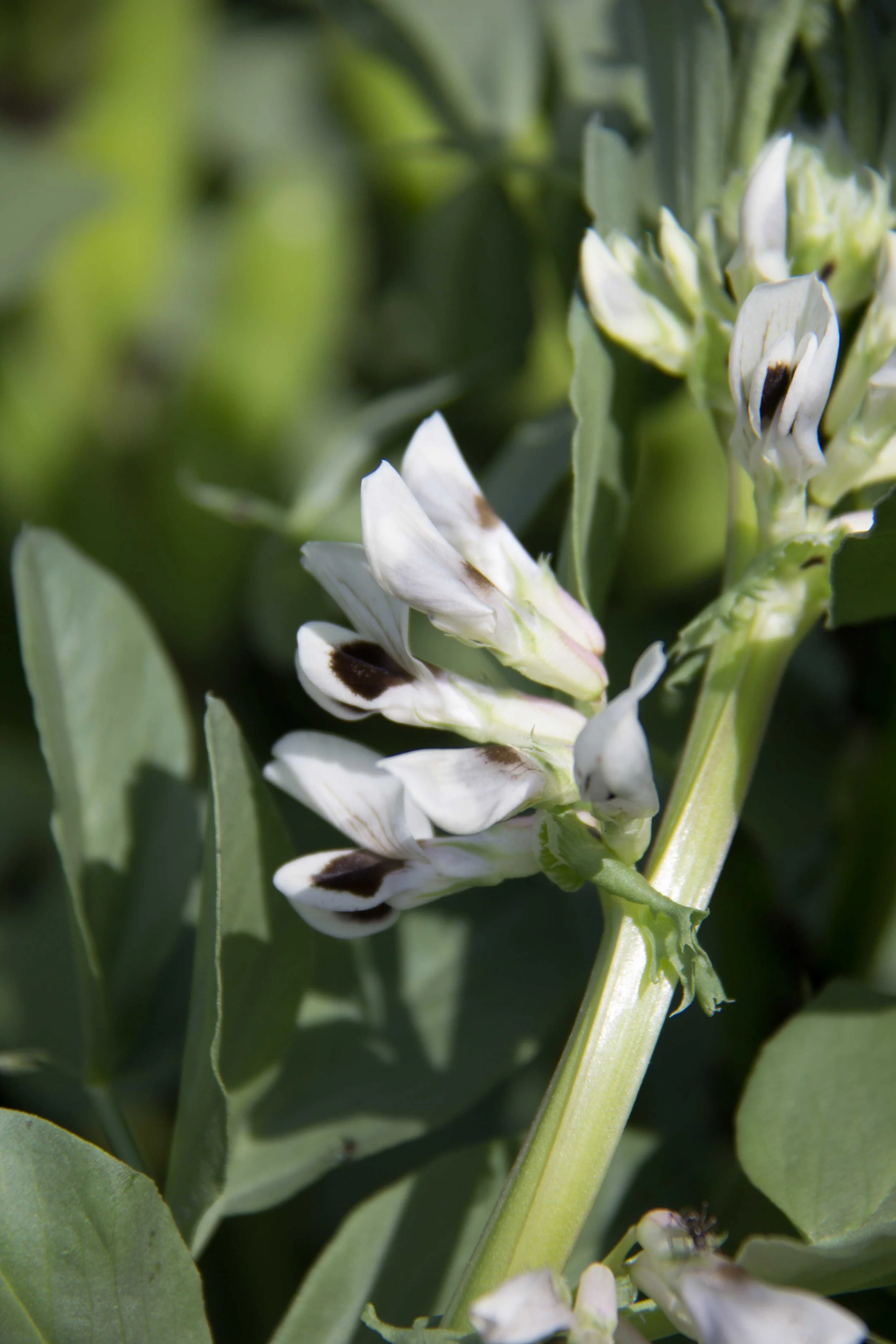Runner and Fava Beans
Runner and fava beans were essential sources of protein during long winters. French settlers relied heavily on dry beans during their winters in the 'New World,' particularly in the years before potatoes were grown.
Fava bean du Lac-St-Jean (Petite gourgane du Lac-St-Jean)
Fava beans (Vicia faba) are sometimes called broad beans or faba beans. The plants are more related to vetch and alfalfa than to common beans.
Fava bean (Lac-St-Jean) in flower
Petite gourgane du Lac-St-Jean is possibly a descendent of fava beans grown by Louis Hébert at Port Royal (Annapolis Royal, NS) in early 1600s. Pierre Thibodeau lived at Port Royal for nearly thirty years before starting a new colony in Chipody (Shepody) in what is now Albert County, NB.
Samuel de Champlain notes the use of fava beans as a significant food source in the New World. Until potatoes were introduced in 1760, fava beans often provided the starchy component to a meal.
Culinary uses: In 1700s, favas were often dried and made into soups in the winter – they were used as main component of meals. Potatoes weren’t yet part of the diet and wheat wasn’t grown so buckwheat and favas provided the filling starchy component of the settler’s diet.
The traditional Lac-Saint-Jean bean soup, soupe aux gourganes, is made from 1 1/2 cups (350 mL) fresh fava beans, 1/4 cup (60 mL) pot barley, 1 tsp. (5 mL) mixed herbs, 3/4 cup (175 mL) finely sliced carrots, 1/4 cup (60 mL) wax beans, 1 onion sliced thin and 1/2 cup (125 mL) diced salt pork and12 cups (3 litres) boiling chicken stock.
Crop description: High-yielding but short plant, only 2-2.5-feet tall. White and black blossoms are plentiful. Later, the stems are covered with small pods containing an average of three to four tan beans. Continues growing and flowering late into the fall even while beans are maturing on the plant.
Growing: Plant early in the spring as soon as the ground can be worked. Avoid rich soil – too much nitrogen will reduce the fava’s rate of nitrogen-fixation and can also trigger outbreaks of aphids. The beans can be shelled when green or left to dry on the plant.
Seedsaving: The plants must be isolated by 1-4 mile from other varieties of fava (broad) beans. Saving seed is a bit challenging in short-season areas or if the fall is cool and damp. The dense pods take a long time to dry and the beans might rot inside while the pod is still damp. When the pods are black, the whole plant can be pulled and hung up by its roots to dry.
St-Pons Runner Bean
Many gardeners might be familiar with Scarlet Runner beans, there are actually many varieties of runner beans, including St-Pons. Runner beans are a different species (Phaseolus coccineus a.k.a. P. multiflorus) than our common beans (Phaseolus vulgaris) used fresh as green or wax beans, or as dry beans.
St-Pons is a red and white runner bean with a long history of being grown on the Acadian Peninsula of NB, according to Norbert Robichaud. Saint-Pons is a small community along the Acadian Shore in Northern New Brunswick.
Crop description: Tall climbing bean with red flowers and white flowers. The large seeds are either pure white or purple with mottled black markings. Approximately six seeds per pod, easy to shell. The beautiful flowers attract hummingbirds.
The crop generated the most excitement among the elementary students of Riverside Consolidated when both planting and harvesting in 2016. Opening a brown pod to find purple seeds was considered extremely exciting – to the point that we saved minimal quantities of seed because so many students wanted to keep one or two ‘Magic beans.’
Culinary uses: Shelled beans were dried and used in winter stews.
Growing: Plant after the threat of frost has passed. Needs tall poles.
Seedsaving: Must be separated from other varieties of runner beans for at least ¼ mile. Simple to shell.
This project is funded in part by the Government of Canada.



